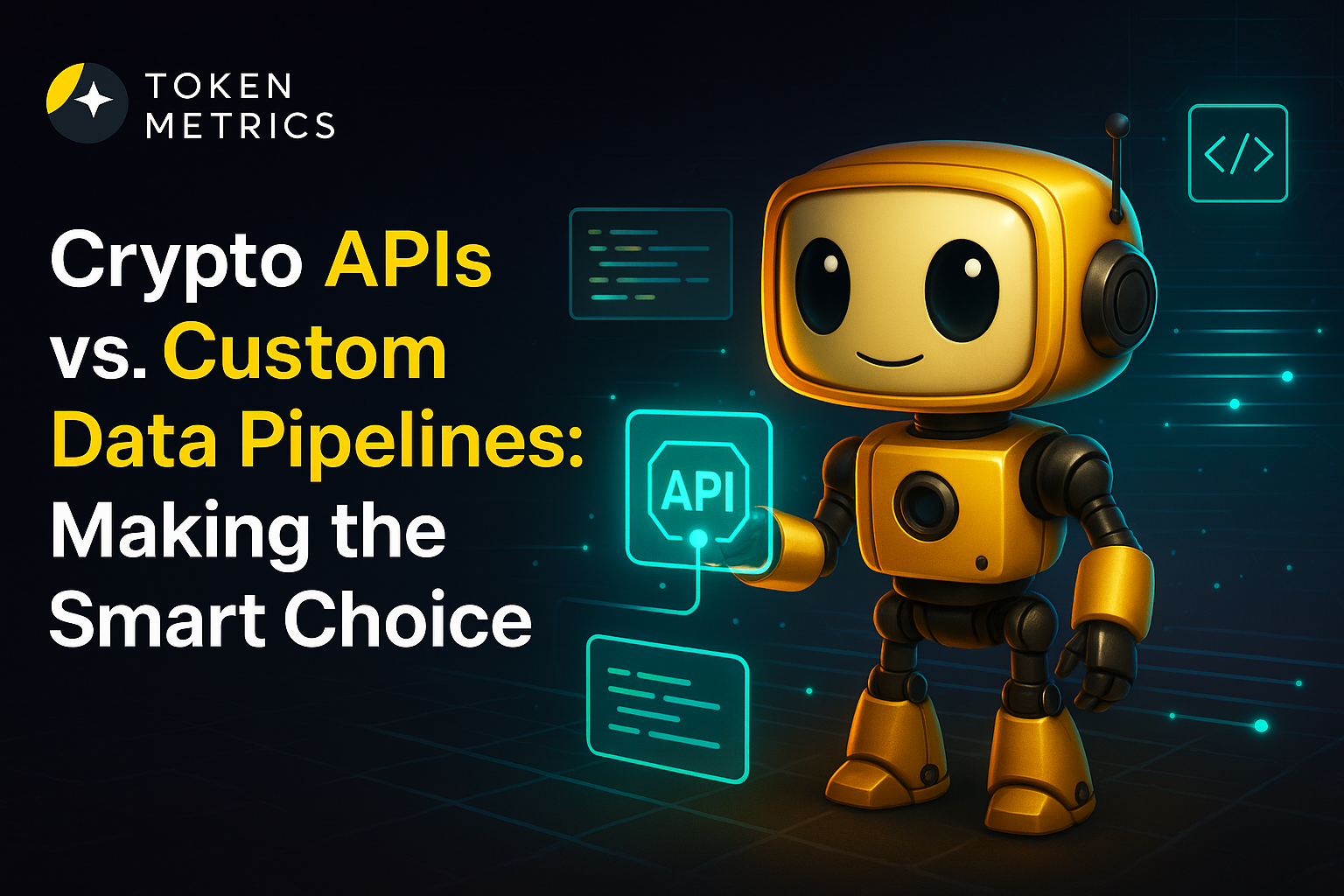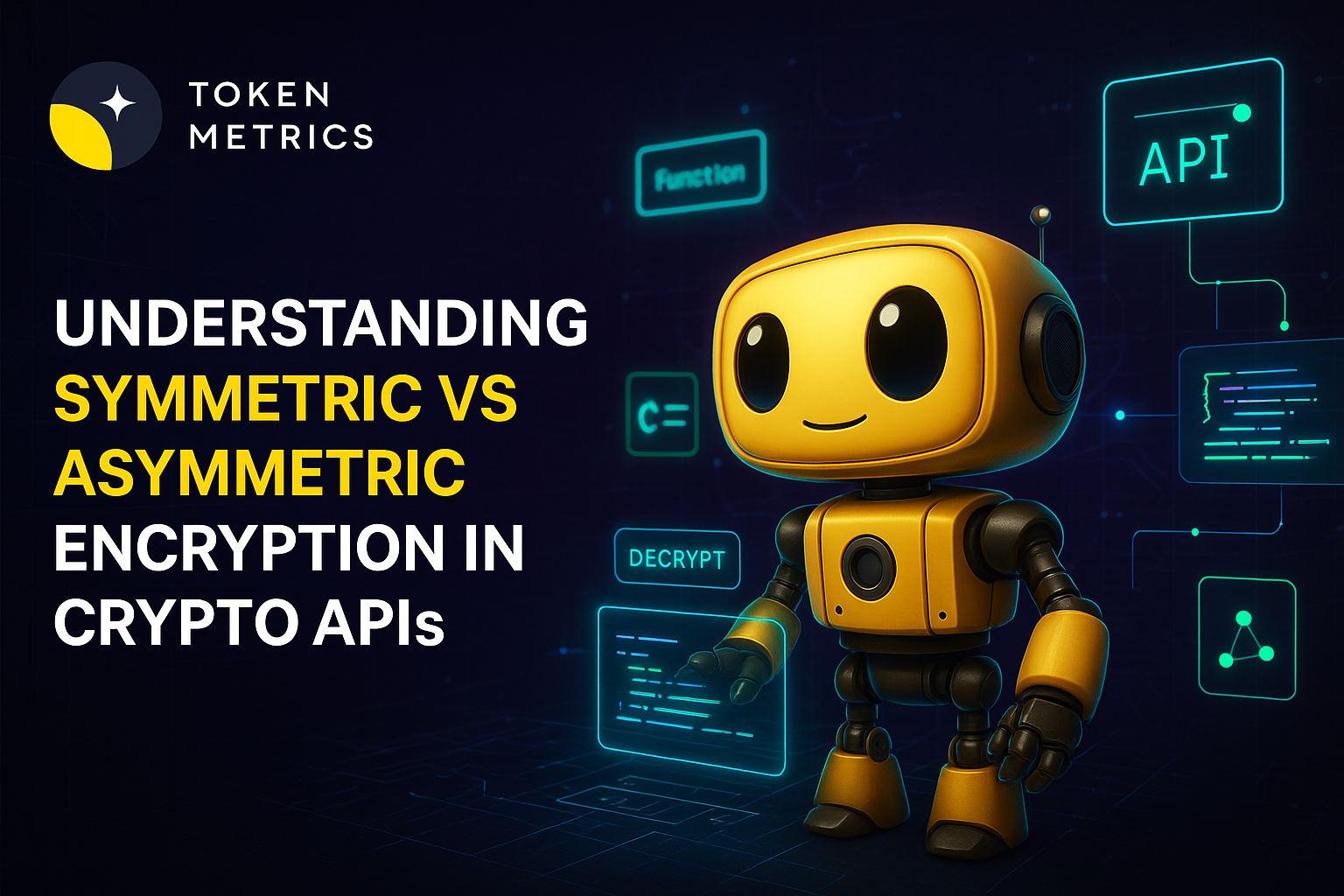
Top 5 Crypto Trading Platforms in July 2025 – Token Metrics Leads the Crypto AI Revolution

Cryptocurrency trading continues to evolve rapidly in 2025, driven by the rise of AI, automation, and real-time analytics. Choosing the right platform is critical to your success as a trader or investor. In this comprehensive guide, we’ll explore the top 5 crypto trading platforms in July 2025, explain what crypto trading is, discuss its different types, and show why Token Metrics stands out as the best AI-powered analytics and moonshot discovery platform.
What Is Crypto Trading?
Crypto trading involves buying and selling cryptocurrencies like Bitcoin (BTC), Ethereum (ETH), and thousands of altcoins on digital platforms to make a profit. Traders capitalize on price fluctuations by entering positions in the market—either manually or using automation.
Unlike traditional stock trading, crypto trading is:
- Decentralized: No central authority or intermediary
- 24/7: Markets never close
- Highly volatile: Prices can swing dramatically in minutes
- Global: Access from anywhere with an internet connection
Types of Crypto Trading
There are several crypto trading strategies and approaches depending on your goals, risk tolerance, and available tools:
1. Spot Trading
Buying and selling actual cryptocurrencies at current market prices. It’s simple and widely used by beginners.
2. Margin Trading
Using borrowed funds to increase exposure. This amplifies gains but also increases risk.
3. Derivatives Trading
Traders speculate on future prices using products like futures and options without owning the underlying assets.
4. Scalping
A short-term strategy that aims to profit from small price movements—often requiring advanced bots or tools.
5. Swing Trading
Holding a position for several days or weeks to capitalize on medium-term trends.
6. Automated Trading (Bot Trading)
Using algorithms or AI to execute trades based on predefined strategies or signals.
7. Copy Trading
Mimicking the trades of successful traders through social platforms.
Top 5 Crypto Trading Platforms in July 2025
Here are the best platforms based on performance, tools, security, and innovation:
1. Token Metrics – Best for AI Crypto Trading and Moonshot Discovery

Website: tokenmetrics.com
Token Metrics is not a traditional exchange but a powerful AI-driven analytics and trading platform. It helps users discover high-potential tokens, evaluate them using real-time data, and automate smarter trades.
Key Features:
- AI-Powered Token Grades: Evaluate tokens with Investor and Trader Grades based on 80+ data points (technical, fundamental, on-chain).
- Bullish/Bearish Signals: Real-time alerts to buy or sell based on AI predictions.
- Moonshots: Daily algorithmic picks of hidden altcoin gems poised for explosive growth.
- Prebuilt Indices: AI-managed portfolios based on market trends (e.g., DeFi, AI, Layer 1).
- Custom Alerts: Get notified by price, percent change, or grade triggers via email, SMS, or Telegram.
- API & SDK Access: Build bots and AI agents using Token Metrics data with Python and TypeScript SDKs.
- $TMAI Token: Powers the ecosystem and is used for community participation, Moonshots, and future governance.
Token Metrics empowers retail traders and institutional investors with AI precision, data transparency, and deep insights that traditional platforms simply don’t offer.
Why It Stands Out: No other platform blends AI-driven analytics, moonshot discovery, and real-time alerts with developer tools at this scale. It’s ideal for both hands-on traders and automated trading systems.
2. Binance – Best for Global Liquidity and Trading Pairs

Website: binance.com
Binance is the largest centralized exchange by volume and offers extensive spot, margin, and futures trading. It supports hundreds of tokens and provides access to a robust launchpad, NFT marketplace, and staking.
Pros:
- Over 600+ coins and trading pairs
- Advanced trading tools and mobile apps
- Low trading fees and deep liquidity
Cons:
- Regulatory scrutiny in some countries
- Complex UI for beginners
Best For: Professional traders seeking high liquidity and advanced tools.
3. Coinbase – Best for Beginner-Friendly Experience

Website: coinbase.com
Coinbase is the go-to platform for beginners and U.S. traders. It provides an intuitive interface, secure storage, and educational resources.
Pros:
- Easy to use
- Licensed and regulated in the U.S.
- FDIC-insured USD balances
Cons:
- Higher fees than competitors
- Limited number of altcoins compared to Binance
Best For: Beginners and passive investors in regulated regions.
4. Kraken – Best for Security and Staking

Website: kraken.com
Kraken is known for its strong security protocols and staking services. It offers spot, margin, and futures trading with a reputation for transparency.
Pros:
- High-level security features
- 24/7 support
- Low latency trading
Cons:
- UI not as intuitive as Coinbase
- Limited educational content
Best For: Traders prioritizing security and staking rewards.
5. Bitget – Best for Copy Trading and Derivatives

Website: bitget.com
Bitget is gaining popularity for its copy trading features and derivatives market. It allows users to replicate the trades of successful investors automatically.
Pros:
- Strong copy trading ecosystem
- Competitive futures trading fees
- Integrated strategy center
Cons:
- Smaller selection of tokens vs. Binance
- Less known in the U.S.
Best For: Passive traders and futures enthusiasts.
Why Token Metrics Is the Future of AI Crypto Trading
While exchanges like Binance and Coinbase focus on execution, Token Metrics gives you the intelligence to know what to trade and when. Its AI-powered platform serves as the brain behind your trades—scanning thousands of tokens daily and distilling actionable insights in real time.
Whether you want to:
- Catch early moonshots
- Build a winning portfolio
- Automate signals into bots
- Backtest trading strategies using real data
- Receive alerts before major breakouts
…Token Metrics is the most powerful analytics and trading assistant available in 2025.
Final Thoughts
Choosing the best crypto trading platform depends on your trading style and goals. For execution, Binance and Coinbase remain strong contenders. But if you're looking to gain an unfair advantage through AI, automate your workflow, and catch the next 10x altcoin before the crowd, Token Metrics is unmatched.
As AI continues to reshape crypto in 2025, platforms like Token Metrics will become the go-to infrastructure for intelligent investing. Don’t just trade crypto—trade with insight.

.svg)

Create Your Free Token Metrics Account

.png)




%201.svg)
%201.svg)


%201.svg)









.svg)




.png)